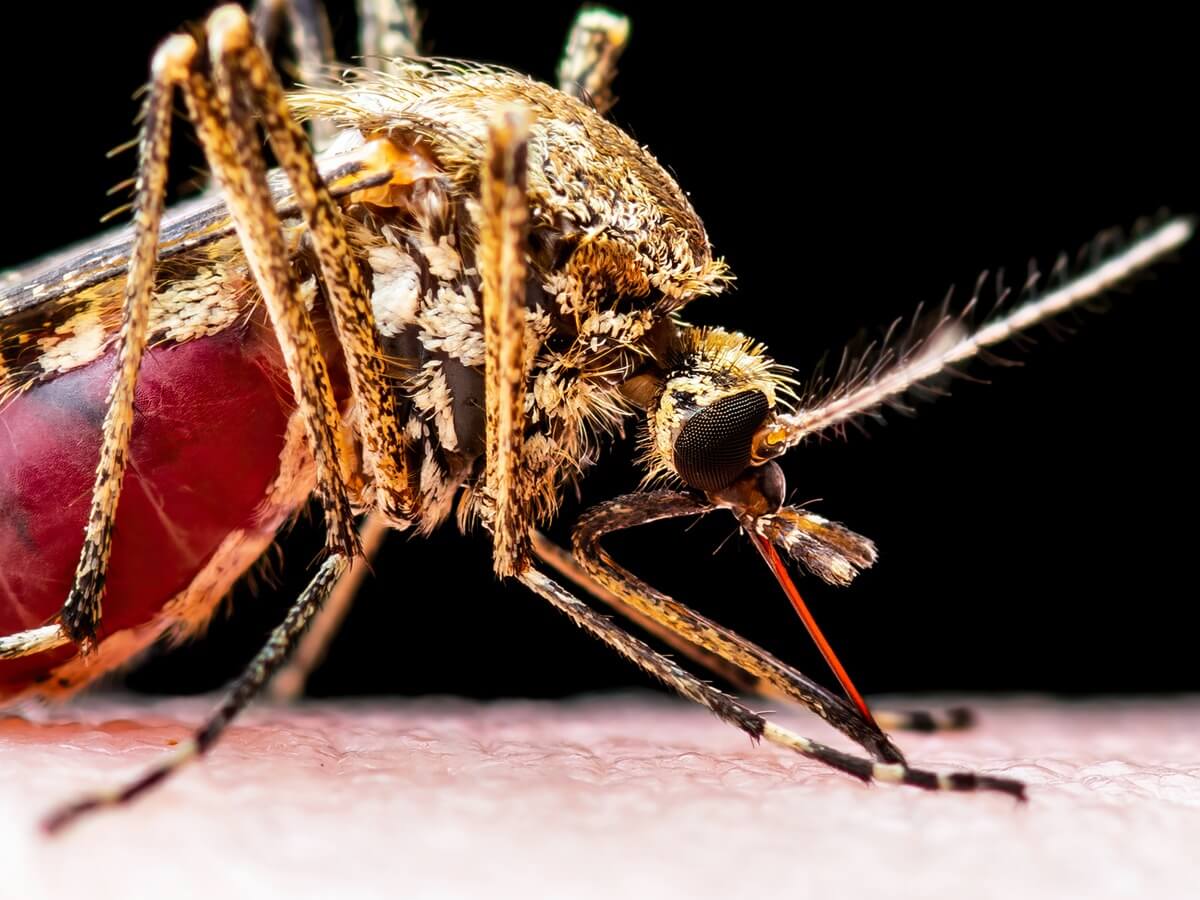Equine Encephalitis: Causes, Symptoms and Treatment

Equine encephalitis is a condition that affects horses, but it can also spread to humans. This zoonotic disease is one of the most serious pathologies transmitted through a live vector (mosquitos) since the mortality rate in humans after infection is 33% and the survivors have irreversible neurological damage.
In North America, the viruses that cause equine encephalitis have been known to be endemic for decades. A seroprevalence of 8.7% of horses in rural areas is estimated, that is, almost 10 out of every 100 horses have the disease at any given time.
If you want to know more about this pathological group, keep reading.
What is equine encephalitis?
The term equine encephalitis encompasses a group of pathologies, not just one. All of these infectious diseases are caused by viral agents in equids with similar symptoms, but the mortality rate, prognosis, and epidemiological potential vary greatly between each condition. Therefore, we’re going to analyze them separately in the following lines.

1. West Nile fever
This medical condition is caused by the West Nile virus (WNV). It produces encephalitis in horses and humans, but it can also affect birds, which act as a natural reservoir for the pathogen. Inter-host contagion occurs through various species of mosquitoes — especially Culex pipiens — which infect mammals by biting and feeding on their blood.
According to professional sources, only 10% of horses affected by this virus develop symptoms. Those who do usually die. The pathogen travels from the blood to the spinal cord and brain, where it causes an inflammatory process and various clinical symptoms of a neurological nature.
2. Eastern equine encephalitis (EEE)
This is the most widely studied variant of equine encephalitis at a general level. Caused by viruses of the genus Torgavirus, EEE has a much worse prognosis for infected animals in the short and long term. It is also transmitted between equids and humans through vectors (mosquitoes) and, unfortunately, the survival rate in infected people is less than 50%.
3. Venezuelan equine encephalitis (VEE)
VEE is caused by the homonymous virus that gives it its name, belonging to the group of arboviruses. The premise is very similar to the previous cases, but this variant reaches a mortality rate of 90% in horses. It’s the condition with the worst prognosis within the equine encephalitis group.
4. West Nile encephalitis (WSE)
West Nile encephalitis, along with EEE, is the least severe type of equine encephalitis. Some horses contract these infections without showing any symptoms, and, in the process, develop antibodies that protect them from future exposure to the virus.
Symptoms
As indicated by the MSD Veterinary Manualportal, the symptoms depend a lot on the virus variant that has affected the horse. In any case, all these conditions are included in the term equine encephalitis because they cause certain clinical signs at a neurological level. We’ll show you the most common:
- High fever: The horse may have a body temperature of around 39.4° C (103 F).
- Clumsiness, tiredness, inability to swallow food, and poor appetite.
- Loss of vision.
- Repetitive unusual movements and supporting its head on solid surfaces – a very common behavior in these illnesses.
- Muscle cramps, cranial nerve palsy, motor palsy, inability to stand, and other neurological signs.
- In the most serious cases, seizures and death. Venezuelan equine encephalitis has a fatality rate of up to 90% in those affected.
The incubation period is 3 to 7 days, but it should be noted that infected animals can’t transmit the virus directly to their stablemates. The pathogens in this group are only spread through intermediate vectors (mosquitoes), but not through direct contact, sneezing, or coughing.
Other pathologies such as poisonings can cause symptoms similar to those mentioned in horses.
How is equine encephalitis diagnosed?
We should suspect this pathology when we see neurological symptoms in the horse, especially if it takes place during an epidemic outbreak or at times of the year when mosquitoes are most active. Various pathologies can be confused with equine encephalitis. So, when faced with the aforementioned signs, the only option is to call a veterinarian.
The vet will collect blood and cerebrospinal fluid samples in order to detect specific antibodies for any of the aforementioned viral variants. If the diagnosis is complicated, one can also resort to PCR and other molecular reactions, which seek to amplify the genetic material of the virus in the sample.
Treatment
Unfortunately, there’s no standardized treatment for equine encephalitis. The approach is symptomatic, which means that clinical signs are treated beyond the infection itself. Intravenous fluid therapy may be necessary – if the horse can’t eat – as well as anti-inflammatory drugs, anticonvulsants and other specific drugs.
We should highlight that there are vaccines for almost all the aforementioned variants. The vet may recommend one for the horses in your stable, depending on the geographic location of the facility and the time of the year. As indicated by professional sources, 3 total doses are required to acquire immunity, at 4, 5, and 6 months.
Prevention
Beyond mandatory vaccination in certain regions, there are certain preventive measures to avoid equine encephalitis in stable horses. Some of them are the following:
- Using insecticides regularly in the horse’s environment, especially if it’s spring or summer. You have to be especially careful in the rainy seasons.
- Keep horses sheltered at night. This is the time when mosquitoes come out to look for blood.
- Eliminate or minimize any unnecessary standing water sources. Mosquitoes need these places so that the larvae can develop into functional adults.
- If you need to have stagnant water sources, introduce freshwater fish that prey on mosquito larvae. Be consistent with the fauna of your environment and use only species that are already established in the ecosystem.
- Remove litter and sources of decaying organic matter from the barn.
As you can see, almost all of these measures try to reduce mosquitoes’ places of growth and reproduction. Without vectors, the virus cannot be transmitted and contagion is minimized – in both horses and humans.

A serious illness
In summary, equine encephalitis isn’t a disease to be taken lightly. Although some variants can occur asymptomatically, others cause death in almost 100% of cases. In addition, surviving horses may permanently exhibit irreversible neurological clinical signs.
Vaccination is essential in areas where the disease is endemic. This doesn’t only protect vulnerable horses, but also prevents the spread of the virus and contagion to humans. It’s everyone’s duty to stop infectious agents before they spread to the general population.
All cited sources were thoroughly reviewed by our team to ensure their quality, reliability, currency, and validity. The bibliography of this article was considered reliable and of academic or scientific accuracy.
- Equine viral encephalitis: prevalence, impact and management strategies, Dovepress. Recogido a 14 de junio en https://www.dovepress.com/equine-viral-encephalitis-prevalence-impact-and-management-strategies-peer-reviewed-fulltext-article-VMRR
- Equine encephalitis, MSD Vet Manual. Recogido a 14 de junio en https://www.msdvetmanual.com/horse-owners/brain,-spinal-cord,-and-nerve-disorders-of-horses/equine-viral-encephalomyelitis-encephalitis
- Questions About Eastern Equine Encephalitis and horses. Recogido a 14 de junio en http://www.lmca.us/PDF/pub2834eee.pdf
This text is provided for informational purposes only and does not replace consultation with a professional. If in doubt, consult your specialist.